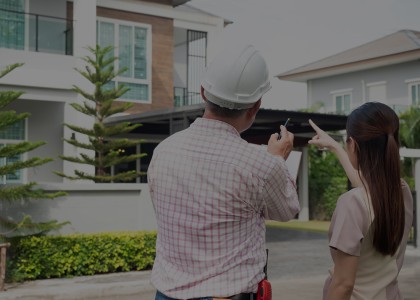All households deserve access to energy efficiency programs that provide energy-saving products and services that work for them, but utilities’ residential efficiency programs often fall short in reaching and serving customers equitably. A new report from ACEEE identifies promising strategies to help utilities design programs to be more equitable and increase participation among underserved communities.
Previous research has shown that program participants are disproportionately white and have higher incomes, while underserved groups, including low- and moderate-income homeowners, renters, communities of color, rural and tribal communities, and non-English speakers, are less likely to receive energy efficiency upgrades. These underserved households pay their share into ratepayer-funded programs and deserve to reap commensurate benefits.
Underserved customers often pay a high percentage of their income on energy costs and could have the most to gain from participation in efficiency programs. However, energy efficiency program designs often make it difficult, if not impossible, for these customers to access them. Further, programs often include costly measures and products popular with higher-income households (e.g., large appliances, pool pumps) while excluding those more popular with lower-income households and communities of color (e.g., smaller or low-cost appliances).
Rather than waiting for customers to seek out and sign up for the programs on offer (“if you build it, they will come”), it is the program administrators’ responsibility to engage with underserved communities to better understand their diverse needs and interests and to develop and implement accessible programs that meet them. The following are among the innovative approaches from program administrators around the United States that are leading the way:
- The Shift Consortium brings together program administrators from across the country to improve the affordability and accessibility of high-efficiency appliances. It conducts research on the challenges of increasing equity in the appliance market and collaborates with manufacturers, retailers, and other stakeholders to offer price markdowns and improve in-store marketing for low-price efficient products. During a pilot in Colorado, the market share of ENERGY STAR®-certified clothes washers under $500 grew from 16% pre-pilot to 39% at participating retail stores.
- The Association for Energy Affordability works with program administrators in New York and California to improve program accessibility and increase the benefits accruing to underserved households. Qualified participants from underserved communities receive higher incentives or qualify for priority access to high-demand programs. Affordable multifamily property owners get higher incentives for measures that result in in-unit energy savings for tenants than for measures that target common areas. Property owners are also presented with more flexible upgrade packages, incentives, and financing to increase engagement and encourage deeper upgrades.
- Efficiency Vermont incorporated changes to its programs to support a “wide and deep” portfolio to address diverse needs among low-income and rural customers. Its programs incorporate lighter-touch measures that reach many customers (e.g., distributing efficient products and devices through food banks), comprehensive retrofits (e.g., envelope and equipment upgrades) that serve those in greatest need, and offerings that find a middle ground between reach and impact (e.g., flexible appliance vouchers allowing households to choose an appliance that best meets their needs). These new approaches allowed Efficiency Vermont to reach seven times more households with high energy burdens than prior program designs.
Other strategies to increase participation among underserved communities include targeted outreach through community partners, microfinancing to extend credit to people who lack access to or cannot afford traditional financing options, and program offerings specifically for renters and rental property owners.
Building more-equitable energy efficiency program portfolios can ensure that everyone benefits from efficiency investments and lead to greater energy and carbon savings. These strategies can also position programs to leverage new and expanded federal funding passed by Congress in recent years—including significant increases in the Weatherization Assistance Program as well as the billions of dollars available for residential energy efficiency and electrification—to reach underserved communities. Program administrators can use the buzz around these federal dollars to engage customers and new partners, create new offerings to increase the reach and impact of weatherization, and support deeper savings through ongoing relationships with community groups, customers, and other stakeholders.



